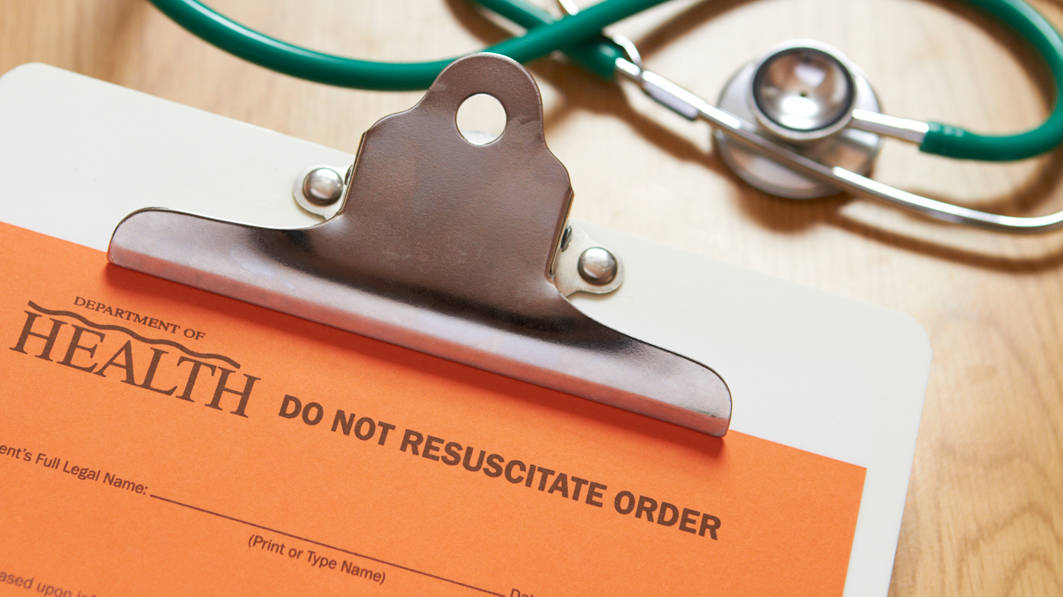“It always seems too early until it’s too late.‚”
This statement is from Pikes Peak Hospice & Palliative Care, a Colorado-based organization that too often sees patients with terminal illnesses or serious injuries who weren’t given the full story about their condition. As a result, many of those same patients suffer needlessly.
Forty-year-old Mike is a good example. A father of five, Mike was on the roof of his home one Saturday afternoon, cleaning out the gutters. His foot slipped, and Mike fell 20 feet to the ground. After a frantic trip to the emergency room, Mike’s wife learned that he had a broken neck and back.
Mike was in a coma and kept alive by a ventilator. He’d never regain consciousness. What kind of life-sustaining measures did Mike want in this situation? The couple had talked around these issues from time to time, but never reached any conclusions.
As followers of Jesus, we know that life changes in a blink of the eye, and we know that our ultimate home is with God for eternity. Jesus sees us in our mother’s womb and each of our days is known by Him before one comes to pass (Psalm 139:16). Mike’s accident did not take God by surprise.
With a little forethought and work, Mike’s family could have avoided the enormous stress of figuring out his specific desires in the horror of the moment. Emergency medical care is complicated, and sometimes murky, often requiring quick decisions on matters of life and death. No one enjoys discussing such matters, but having some plan based on your pro-life values and beliefs is better than no plan at all.
Fortunately, there’s a lot of help out there today.
Hospice cares for those stricken with a life-threatening illness or injury, and deals with families in shock as they try to navigate the complexities of emergency medical care.
Advanced care planning includes legal directives that enable people like Mike — those who can no longer communicate — to make sure their decisions about medical treatment are known to family, friends and physicians. These decisions often include questions about life-sustaining treatment such as CPR, feeding tubes, breathing machines (such as a ventilator), pain management and organ donation. You and your loved ones can draft a document specifying your wishes, or you can designate someone to serve as your health care proxy. A proxy speaks on your behalf and is allowed to receive updates on your care.
These documents can be found online (U.S. state specific forms), through medical offices and hospitals, or drafted by an attorney. Dr. John Dunlop, a geriatric physician, bioethics professor and author of Finishing Well to the Glory of God: Strategies from a Christian Physician, says, “An advanced directive is not threatening. It’s something that everyone should do.‚”
Concerning the online forms, Dunlop cautions: “A lot of states will have boxes regarding different technologies. … For example, in Illinois, the form has a check box for a ventilator, for feeding tubes and for antibiotics. And those are just way too context-dependent to make a decision early about them.
“So people come into the office with an advanced directive that says no ventilator, and I would say, ‘Let’s think about that.’ ‚”
Dunlop uses the example of a patient who enters the hospital with a serious case of pneumonia. What happens, he asks, when an advance directive is presented to the family and it says no ventilator?
“You’re probably going to die,‚” he explains. “But if you don’t have that [on the form] and they use an antibiotic and a ventilator? It’s likely you’ll be just as good as you are now. What those people really mean is, ‘I just don’t want to be kept on this machine forever!’ ‚”
Advance directives emerged over concern about patients receiving unwanted medical treatments and procedures in an effort to preserve life at any cost. While doctors certainly provide guidance, the patient’s wishes are the ultimate authority when it comes to receiving or discontinuing life-sustaining treatment.
Most importantly, be sure to verbally and clearly communicate your desires to family members, revisiting these desires as you age.
Life can change in a moment, and it’s important that you’re not ceding control of your deeply held values to others in a moment of crisis and profound stress. It’s difficult enough to understand and make complex medical decisions on a good day!
Beginning the conversation is a start. We recommend reading the article “Discussing Your Medical Wishes: A Patient’s Guide,‚” from Focus on the Family. We also suggest Aging with Dignity’s “Five Wishes‚” worksheet, which helps families sort through the medical jargon while tackling important decisions about medical care options. You can order this resource online for a small fee at AgingWithDignity.org or by calling 888-594-7437.
Navigating the emotional and spiritual landscape that accompanies end-of-life care can take its toll on you and your loved ones. If you need further guidance and encouragement, Focus on the Family has a staff of family helps specialists — including licensed, professional Christian counselors — who are available to speak with you at no charge. Just call 800-A-FAMILY (232-6459).



















